V Is for VegetablesInspired Recipes & Techniques for Home Cooks -- from Artichokes to Zucchini
One of America’s most highly acclaimed chefs gives us more than 140 simple recipes and techniques for imaginative vegetable cooking at home.
One of America’s most highly acclaimed chefs gives us more than 140 simple recipes and techniques for imaginative vegetable cooking at home.
Gramercy Tavern’s Executive Chef Michael Anthony believes a cook’s job is to create delicious flavors and healthy meals. Written for the home cook, V IS FOR VEGETABLES celebrates the act of cooking vegetables he loves. Anthony shows how unlocking the secrets of vegetables can be as simple as roasting a beet, de-knobbing a Jerusalem artichoke, peeling a gnarly celery root, slicing a bright radish, washing a handful of just-picked greens.
V IS FOR VEGETABLES is personal, accessible, and beautiful. Its charming A to Z format celebrates vegetables in richly detailed illustrations, glorious food photographs, and lots of helpful how to do it techniques. Recipes include crispy composed salads, fresh herb sauces, satisfying warm gratins, vibrant stews, simple sautéed greens over a bowl of grains, and veggies with meat and fish, too.
V IS FOR VEGETABLES delivers the tools to transform and conquer the vegetables in a CSA basket, from the farmers market, and even the grocery store. It is an eye-opening book for vegetarians and omnivores alike.
Michael Anthony is the executive chef-partner of Gramercy Tavern, the executive chef and director of Untitled, and the author of The Gramercy Tavern Cookbook. He received the James Beard Award for Best Chef in New York City in 2012. Prior to joining Gramercy Tavern in 2006, he was the executive chef of Blue Hill at Stone Barns.
Dorothy Kalins is a two-time James Beard Award winner and the founding editor of Saveur magazine. She produced The Gramercy Tavern Cookbook and many other award-winning cookbooks.
We recently had the great pleasure of once again talking to one of the nicest people on the New York culinary scene Michael Anthony. Our previous conversation was about his first book The Gramercy Tavern Cookbook an homage to the beloved Manhattan restaurant. This time he focuses his attention on vegetables with some very impressive results.
BAF: I guess my first question is you had the really interesting, all encompassing book about the restaurant last time, why vegetables this time?
Michael Anthony: Well, we felt like … When I say we, we’ve reunited the band. We had an all star team of people that worked on The Gramercy Tavern Cookbook and it was a bit of an unknown. I had never done a book before and… life came at me in a very interesting way as I was trying to imagine how to accomplish that project. Dorothy Kalins is a long time friend of Danny’s and Gramercy Tavern and, as I was getting started working here at the restaurant, I got to know her a little bit along the way as just a fan of the restaurant. What I didn’t know is that she actually lives in the same building that I live in in midtown.
The week that we were just starting to contemplate seriously doing The Gramercy Tavern Cookbook, Dorothy shows up in the lobby, my lobby, and I was like what are you doing here? It was kind of wonderful. We were able to make our way through learning how to work together through The Gramercy Tavern Cookbook. We felt like we left a lot of ideas on the table. Gramercy is such a big story.
It was just filled with people who run the place and the kind of evolution of the food story here. Anyway, it was a big book and it wasn’t really enough room to go into all the different nuances of the cooking. V Is for Vegetables, was born of this idea of like hey I’d just like to express something that’s very personal about the way I find inspiration in creating dishes starting with the ingredients.
Vegetables provide the easiest point of entry into telling that story about creating distinctive foods that are kind of a specialty from here. It’s easy to tell the story through their color, shapes, sizes. It’s great because it shows off naturally the seasonality of the cooking. It focuses on this childlike infatuation with holding oddly shaped vegetables.
It’s not that we don’t use fish and meat to tell that story, and I definitely didn’t want to suggest that great eating is about leaving out the pleasurable things in life. I enjoy eating all sorts of things, but I wanted to try to put a bit of a definition to this notion of telling our story through those vegetables as a great pleasurable way of getting people to shop locally and find pleasure and inspiration in those walks, whether it’s through a garden or a farm.
V Is for Vegetables, it is a personal take on it. Not to mention that The Gramercy Tavern Cookbook was I think a thoughtful translation of the recipes that we do here that make up the food philosophy. Whereas, V Is for Vegetables is wholeheartedly a cookbook for home.
BAF: You tested the recipes in a home kitchen. You didn’t go to the restaurant to come up with the recipes and work on them.
Michael Anthony: That’s exactly right. More than test them, we actually went about making this book I guess using an unorthodox process. I would cook six or eight dishes per day in Dorothy Kalins’ home kitchen, which is two floors below mine. Every once in a while I would run upstairs to grab my favorite knife or a pot or a pan or something. We literally started the process on me cooking the dishes. The recipe tester would sit across the counter and record the recipes and in a lot of cases kind of like throw out her banter of like “you know, a home cook’s not going to do it like that.” I would say, “well why not? Why don’t we teach them?” She would say, “Just because, no one’s going to go about it like that. Either they don’t have the time or the skill and so let’s do this the way a home cook would do it.” I would end up saying okay.
It was an interesting process with a lot of cooks hands in the pot so to speak. The photographer, Maura McEvoy, was very active and very diligent about capturing process shots and telling the true story of how to make your way through this. She did it in such a beautiful way so we didn’t sacrifice any of the beauty of the book by also focusing on some practical issues. We shot the book in natural light which I think also lends a sense of realism.
We used all of the kind of very normal, granted Dorothy has a nice kitchen, but none of it is professional equipment, it’s all home stuff. Those recipes were really touched up so that they work and so they work for home cooks. We did the dishes. We calculated the time that it really takes to do the recipes. We wanted for that side of the book to be really completely helpful, encouraging and realistic.
BAF: Certainly that’s a very interesting, like you said, an unorthodox approach. It’s convenient that Dorothy Kalins lived downstairs.
Michael Anthony: It was. Not only did she become a great mentor along the way, she was like our fairy godmother. She really nurtured our entire team and has been nurturing that team for years. It was tremendous to kind of pull everyone together again to work on this project. I think the more I learn about the book business, the more I understand that it’s a rare thing to be able to fully realize a vision for a book artistically, without it becoming an art book.
We wanted it to be one of those books that lives in the kitchen, pages turned down and splatters and stains, but we also wanted it to be kind of a real justification for cooking books. This past year was such a tough year for the publishing world. We really wanted for this to be an example of why books are so wonderful to hold in your hands.
It was hard. I talked my wife into doing the end pages. You’ll see those hand drawn pictures of vegetables kind throughout the book as a bit of encouragement for pulling you through and organizing the chapters. We also went way out of our way to get a hold of the rights to use some of the old Parisian botanical prints that show up in the beginning of each chapter.
It’s a very richly designed book. Dawn Morris the designer, did a remarkable job giving color to the charcoal based hand drawings as well as the layout is really smart. We wanted to convey a sense of fun as well. This is not an encyclopedic book of botanical information. This is supposed to be a beautiful fun book about falling in love with cooking vegetables.
All the anecdotes notes and side notes and paragraphs that I wrote about the dishes are really personal anecdotes of where I discovered a particular flavor combination or how I learned how to handle a particular vegetable. The surprise that I got in actually revisiting some family recipes which is something I rarely do. There’s a little bit of nostalgia in some of those recipes. Literally using grandma’s index card as a starting point and reinterpreting some of her recipes.
BAF: That seems that vegetables … I actually want to phrase this properly, have a bad rap. People either find them boring or they think that a book about vegetables is going to be just vegetarian and tofu.
Michael Anthony: You’re right.
BAF: I know a lot people feel intimidated by vegetables in that they aren’t aware of the versatility that’s there.
Michael Anthony: I think you’ve pointed out two issues that tend to be pretty common. You think about vegetables from an American cook’s perspective. I didn’t want to come at this in a pedantic way or in a parental way of saying eat your vegetables or else you’re going to hell. I wanted to encourage people to explore the interest. It’s a little hard to draw that bridge from a knobby, dirty root to hmm, yummy sort of salivating dinner. I wanted to create that sense of appeal. There’s a certain sensuality to those vegetables.
I wanted to underline that with a few tips it actually isn’t quite as time consuming and as intimidating as a lot of people feel, it just takes a little practice. We’re a little uninitiated. That’s where, as a professional chef, some of those tips come in handy. Organize your cutting board like this. Peel this first. Cut that next. Trim that and then boom cut it in half and you’re ready. There’s a certain sense of practicality to the process that we show.
Then I just wanted this to be, rather than kind of a suggestion of another ism. It’s not a book about Veganism or Vegetarianism. It’s a book about eating well and living well. There’s a little suggestion within the book about possibly treating, reinventing the proportion in which vegetables play a role in normal dishes. That it might very well be a healthy and delicious new idea to combine fish and meat with vegetables in a proportion that changes, so that we’re enjoying eating just as much as ever but yet along the way we’re rethinking the proportion of those things in a dish.
There’s even a little suggestion of what if we imagined the iconic American meal in a bowl rather than on a plate. Just thinking of the physics of that, how it would positively impact the way we eat in terms of flavors, economics, and health, and a whole variety of issues that might be touched on in that one gesture.
There is a little bit if idealism there into this notion of eating a vegetable forward dish or a vegetable forward menu, the way we serve at Untitled and Gramercy Tavern and even more so at home. A lot of times those vegetable combinations literally drive the idea of a meal. My family invests in a CSA box that’s delivered every Friday and so there’s fun and adventure and pulling out new ingredients.
Part of the book is about sharing the names of these funny shapes and sized vegetables where collectively we may not be familiar with what those funny sunchokes are called. What to do with a rutabaga and how can you utilize the whole plant if you’re looking at a pea shoot with stem and leaves attached or Swiss chard, a whole bunch of Swiss chard with long stems. There was a certain thriftiness of how to get your money’s worth if you’re going shopping in the green market. How can you turn an armload of stuff that you buy from your local farmers into not just one recipe but three or four meals.
BAF: That’s a great idea.
Michael Anthony: There’s a little bit of strategy involved in the book too. It’s a mix between all out enthusiastic effort to get people to cook more often and a little bit of and here’s how to go about doing it.
BAF: You’ve worked with Alain Passard.
Michael Anthony: Yes.
BAF: He has a unique view on vegetables, did he in some way instill this passion or this interest in you?
Michael Anthony: When I worker at the restaurant, it was actually before they changed their format.
But my answer would still be yes, because as a chef he has always inspired the way I look at food. He is as close to a genius as we get in our industry. Long before the restaurant actually changed it’s format, he was fascinated with the subject and would come up with the most creative, simple, thoughtful approaches to using vegetables and I’m sure that was an evolution in his own style of cooking. It’s what originally caught my attention as a young cook living in Paris. Yeah, I’ve always been attracted to the way he cooks.
Getting to know some of the people in his kitchen along the say and then getting a chance to visit him was certainly an inspiring and ongoing source of inspiration. It wasn’t necessarily the notion that he changed the format of his restaurant nor is the kind of precious look that he gives vegetables. His restaurant is like a 30-seat restaurant where we serve 30 covers in our restaurant before the first hour.
I think the same infatuation with translating seasonality, recognizing the textures, shape sizes, pose of vegetables, gives us an amazing canvas to play with. It takes artists like Alain Passard to break down all the barriers to create more space for everyone to operate in. Now this is not a marginal topic. It’s not a fast passing trend. It’s a defining characteristic of the way American’s eat.
While it may come across as somewhat revolutionary because this is a topic that a lot of people are enjoying talking about, writing about, cooking in restaurants, cooking at home, it actually just is coming a full circle. If we look back, our parents and grandparents have always had access to gardens and then more than now they were a part of our lives. I think this is kind of coming a full circle more than introducing a new idea.
BAF: Did he (Passard) have his garden while you were there?
Michael Anthony: No. That was also an evolution to their story and certainly one that inspired a lot of people, in fact everyone. Exploring this idea of how does a commercial kitchen relate to actually working with a garden. We’ve seen this pop up in so many ways and I’ve had a chance to participate in a very good one.
The notion of bringing cooks closer to the actual growing of the foods that they’re cooking. Tying restaurants with the commercial outlet of the farm, has definitely been an inspiration and continues to be a defining characteristic. In some ways, places like the French Laundry and Meadowood also having extraordinary opportunities in terms of space with neighbors and usage of land. All of them are exciting.
I think down the road it might be interesting to visit a more replicable and realistic relationship between farm and kitchen that has the restaurant playing the role as co-producer rather than kind of dog in a forest. The restaurant team learning how to ask great questions rather than pose odd and fetish-like demands on the garden. I think you’ll see that. It’ll also be a natural part of the story that more and more people will gain access and build relationships with their growers.
We showed that a little bit in this book in the sense that we asked a lot of our favorite growers to save plants intact, roots, stems, leaves, and we captured these portraits of them to show off in the beginning of the chapters. That idea is because we don’t always get to see the plants in their natural form.
Part of it is just increasing our familiarity with the food that we eat. In some cases, it’s literally pointing out what this is as much as what to do with it. My wife’s friends would post on their Facebook pages each week, I’m so excited to get my CSA delivery but what is this. Then I would kind of sit back and be somewhat amused by the number of responses that would come through.
BAF: The other night I fell asleep while I was watching Saturday Night Live. I woke up and you’re on the TV in Korea.
Michael Anthony: I took a trip in October. Invited by the Korean Food Foundation to check out Korean food and culture. I was simultaneously shooting some segments for Cat Greenleaf’s Talk Stoop.
BAF: That’s what I saw.
Michael Anthony: That’s a funny stoop. I was sitting on the steps of the Imperial Palace.
BAF: Obviously one is familiar with Korean barbecue, but when I think of Korean food, I think Kimchi, and vegetable based.
Michael Anthony: Right and it is. What hit me is, and this is kind of why I wanted to go, is to really get a closer look. The variety of foods is astounding and so much more interesting than we know it here or know of it here. The depth of flavor as well is something that is remarkably surprising when you go over there. Then to see that nearly every food that they eat is fermented or preserved in some way, shape or form. Crazy.
A lot of inspiration. A lot of interesting ideas. I really think that this is going to be a growing trend in the way we cook and eat here in the States. I included a Kimchi recipe in V is for Vegetables because I wanted for people, without over doing it, I wanted them to hopefully have a sense of part of eating vegetables is learning how to kind of manipulate them and preserve them. We covered pickles in the Gramercy Tavern book, but I wanted for people to get a sense of how to manipulate them a little bit. Plus, writing a cookbook, you’re writing to such a wide audience.
At the same time, you know that colleagues from the industry are looking for inspiration from the book. That’s a very difficult balance to strike. I talked about some of these basic methods of preservation in which we’re infatuated with, on a professional level, that are easy enough to try out. You don’t necessarily need any specific equipment or inside knowledge to do this at home either.
BAF: Since you mentioned it in the interview that a lot of the professional culinary people are all eating Korean food these days after work or when they get the chance to go.
Michael Anthony: Yeah, for sure. That’s what we see here. We have a ton of Korean colleagues that are working in Gramercy Tavern and Untitled. There are several sous chefs now that are Korean. I traveled over to Seoul. I met with 12 people that were former employees that now live and work there. Did a little reunion dinner in the fish market. It was great.
BAF: People get so caught up with these perfect ideals of what vegetables are and can be that they forget about what, as you said, the versatility that’s there.
Michael Anthony: I think it’s just kind of recognizing that we do use that as a symbol of bounty, but getting down to the specifics of it. Like how can one of those vegetables or a couple of those vegetables end up being the beginning point of a creative dish. How can we fully utilize the availability in a particular season to generate multiple meals and really sustain ourselves. Ultimately, how can we kind of investigate how we might be able to eat affordably and in a more healthy way. There was definitely some idealism built into this notion of let’s take a closer look at what’s so interesting about vegetables.
BAF: What’s next or do you have time for anything new?
Michael Anthony: I just came back from Chicago where I was promoting the cookbook and I got to cook at three restaurants and did a little recruiting at a culinary school. I also had a chance to travel to the West Coast to promote the book. I’m kind of psyched to be back home. With two restaurants that we’re working really hard to keep moving forward and that’s a handful as it is. We’ll see. Maybe 2016 will have some interesting surprises. We’re also kind of on the eve of launching an initiative called Hospitality Included.
Kind of revisiting the economics of the restaurant and distributing the revenue in a brand new and exciting way.
BAF: This is the ‘no tipping’ policy?
Michael Anthony: Exactly. This idea of trying to pay, finally trying to pay, our cooks a more equitable hourly rate without leaving anyone behind.
“In this splendid tribute to vegetables, Anthony focuses on creating great flavors and healthy meals… Enticing and gorgeous, this collection showcases the best that nature has to offer.”-Publishers Weekly starred review.
CARROT SOUP WITH COCONUT MILK
CRUNCHY SALAD of KOHLRABI and TOASTED WALNUTS
ROASTED BRUSSELS SPROUTS WITH MAPLE SYRUP
SAUTÉED MUSHROOMS ON FLATBREAD WITH BRAISED GREENS
![]() CARROT SOUP WITH COCONUT MILK
CARROT SOUP WITH COCONUT MILK
Serves 4
When friends and family visit me in New York, they’re always interested in tasting lively, exotic flavors. Here’s a soup I love to serve them. The combination of coconut, orange, and fennel makes it aromatic and fun and puts the carrot in a whole different neighborhood.
4 tablespoons olive oil
1 small onion, halved and diced
½ small fennel bulb, halved and thinly sliced
1 clove garlic, minced
1 ½ pounds carrots, sliced
3 cups vegetable stock or water
1 cup orange juice
½ cup coconut milk
Salt and pepper
¼ cup minced radishes
Heat 2 tablespoons of the oil in a medium saucepan over medium heat. Add the onions, fennel, and garlic and cook until softened, about 5 minutes. Add the carrots and cook for about 5 minutes. If the aromatics start to brown, lower the heat a bit. Add the stock and orange juice and simmer until the carrots are just tender, about 10 minutes. Add the coconut milk, salt, and pepper, and simmer for another 10 minutes.
Transfer the soup to a blender and process until satiny smooth. Drizzle with the remaining oil and check the seasonings. Serve hot or cold and top with the radishes.![]()
CRUNCHY SALAD of KOHLRABI and TOASTED WALNUTS
SERVES 4
I like the way this salad shows off kohlrabi’s brightness of flavor and crunch. Add a handful of chopped parsley if you like. Let it sit for a while to marinate in the walnut vinaigrette before serving.
¼ cup fresh lemon juice
¼ cup walnut oil
2 tablespoons olive oil
Salt and pepper
1 or 2 kohlrabi, peeled and sliced paper-thin
½ cup toasted walnuts, roughly chopped
Whisk together the lemon juice, walnut oil, and olive oil in a small bowl, then add lots of salt and pepper. Combine the kohlrabi and walnuts in a medium bowl. Gently toss with enough of the vinaigrette so that the salad is quite moist, separating the kohlrabi slices.![]()
ROASTED BRUSSELS SPROUTS WITH MAPLE SYRUP
SERVES 4
Here I complement the browning of both the Brussels sprouts and the garlic with a generous amount of salt and a drizzle of maple syrup added at the end. I’m not trying to makea sticky glaze, just a light contrast of flavors. Irresistible!
3 tablespoons olive oil
1 pound Brussels sprouts, trimmed and halved
Salt and pepper
1 tablespoon minced onion
1 small clove garlic, minced
2 tablespoons maple syrup
Fresh lemon juice
Olive oil for drizzling
Preheat the oven to 375°F. Heat the oil in a large ovenproof skillet over medium heat, add the
Brussels sprouts cut-side down, salt, and pepper, and cook until golden, about 5 minutes. Transfer the skillet to the oven and roast until the Brussels sprouts are tender, about 15 minutes.
Return the skillet to the burner over medium heat. Scatter the onions and garlic over the Brussels
sprouts, drizzle with the maple syrup, then turn the sprouts over and let the syrup bubble and
caramelize a little. Remove from the heat and drizzle with lemon juice and oil.![]()
SAUTÉED MUSHROOMS ON FLATBREAD WITH BRAISED GREENS
SERVES 2
Two simple gestures deliver so much. Take a crispy flatbread (or cracker or even grilled bread) and top it with something soft and garlicky, like sautéed mushrooms, then add greens like kale, spinach, or chard. It’s the best kind of open-face sandwich—the bread captures the vegetables’ succulent juices. I like to use cultivated hen-of-the-woods or maitake mushrooms for their texture.
3 tablespoons olive oil
2 tablespoons butter
2 cloves garlic, smashed
¼ pound mushrooms, thickly sliced
Salt and pepper
2 pieces flatbread
½ recipe Kale Cooked Quickly (page 169)
Heat 2 tablespoons of the oil and 1 tablespoon of the butter in a large skillet over medium-high heat. Add 1 clove garlic, the mushrooms, salt, and pepper, and cook until the mushrooms are lightly browned, about 6 minutes. Transfer to a bowl.
Add the remaining oil and butter to the skillet over medium heat. Add the remaining clove garlic and, when the butter starts to brown, slip in the flatbread, a piece at a time, and brown on both sides, about2 minutes. Spread the sautéed kale over the flatbread, and top with the mushrooms. Serve it up.
V IS FOR VEGETABLES recipe courtesy Little, Brown and Company Copyright © 2015 by Michael Anthony and Dorothy Kalins, Ink, LLC


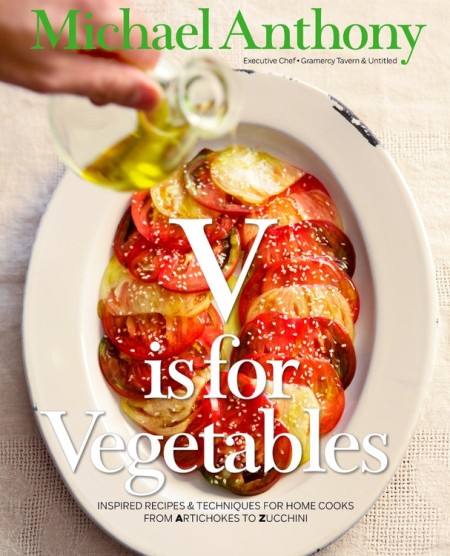



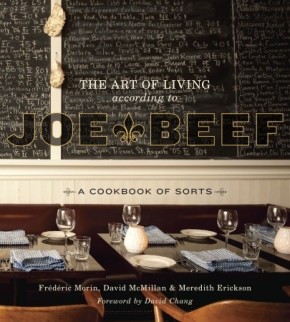

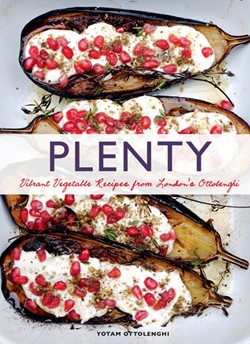
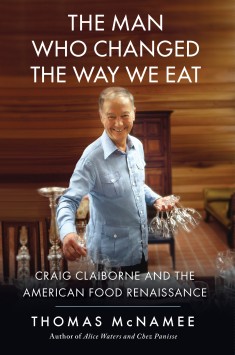
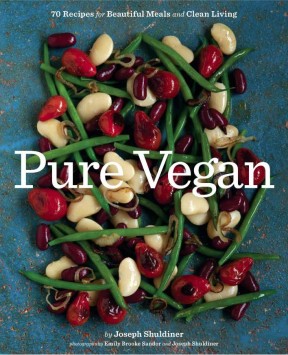
Leave a Reply